An improved selection of the Coreopsis ‘Rosea’. This forms a low, bushy mound of ferny green foliage, bearing masses of pink to rose colored daisy like flowers. Flowering begins in early summer and continues for weeks.
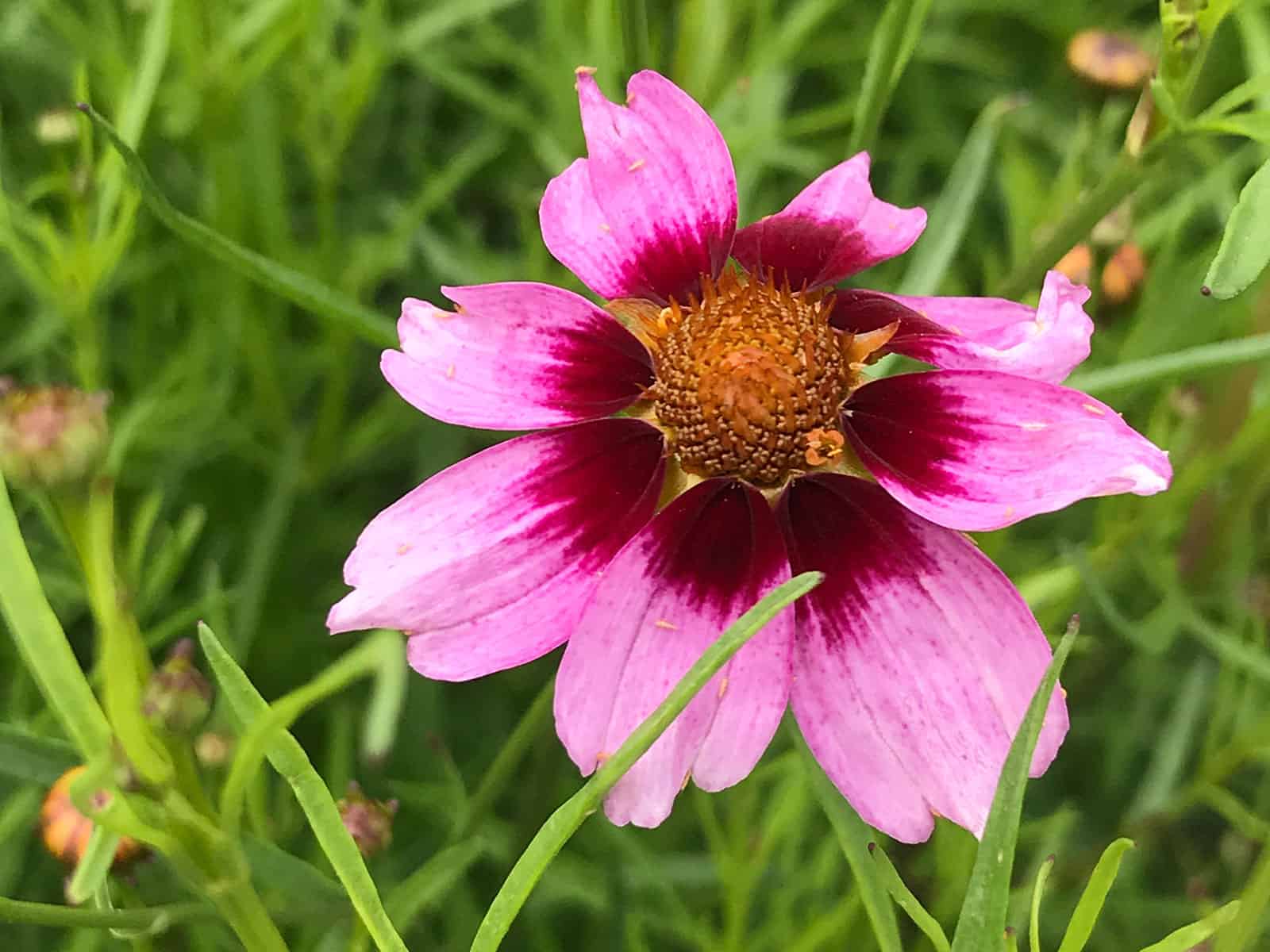

An improved selection of the Coreopsis ‘Rosea’. This forms a low, bushy mound of ferny green foliage, bearing masses of pink to rose colored daisy like flowers. Flowering begins in early summer and continues for weeks.
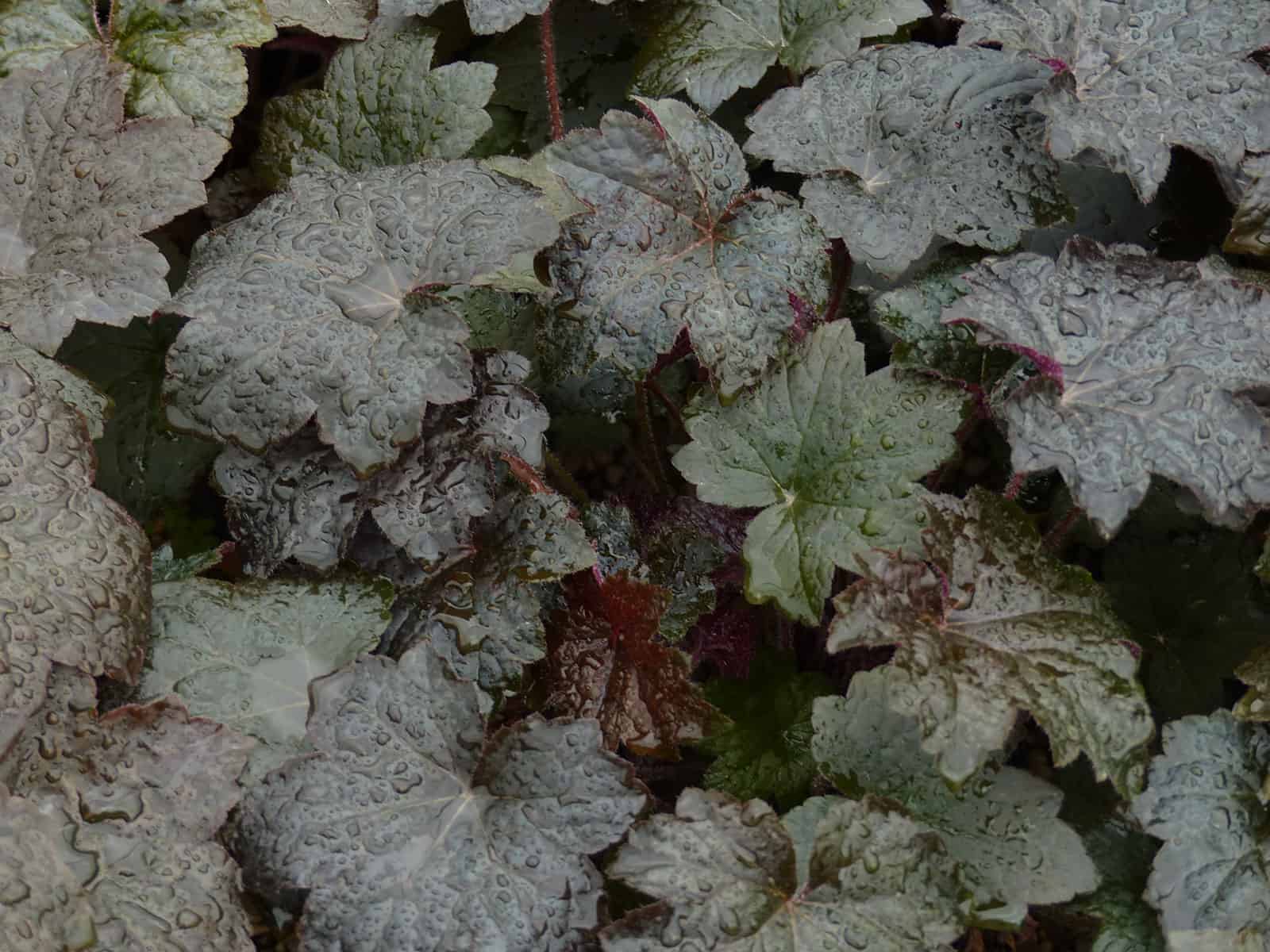
This selection was the first of many purple-leaved Coral Bells, and is still an excellent choice for towards the edge of the border, or in containers and tubs. Plants form a low mound of maple-shaped leaves, from bronzy-green to rich purple-red. Spikes of small creamy-white flowers appear in early summer. In hot summer areas a part shade location will help to prevent the leaf colour from fading. Evergreen in mild winter areas, but plants may be clipped hard in early spring. Division is not always easy, but can be attempted in spring. A former Perennial Plant of the Year for 1991

Culture: Easily grown in evenly moist, organically rich, well-drained soils in part shade to full shade. Best in part shade (some morning sun or sun dappled conditions). Established plants have some tolerance for dry shade (particularly plants with thick leaves), but soils should never be allowed to dry out. Full size and quality form are best achieved with consistent moisture. Water is best applied directly to the soil beneath the leaves. Divide plants as needed in spring or autumn. Division is usually easiest in early spring before the leaves unfurl. Plant in locations protected from wind.
Noteworthy Characteristics: Hosta is a genus of about 70 species of shade-loving, rhizomatous, clump-forming, herbaceous perennials which are native to open woodlands, woodland margins and glades in Japan, Korea, China and eastern Russia. Hostas are primarily grown for their ornamental foliage. Stalked, conspicuously-veined, often dense, basal leaves in a variety of shapes, sizes, colors and textures rise up from a central rhizomatous crown to form a rounded to spreading mound of foliage. Bell or funnel-shaped flowers in terminal, mostly one-sided racemes bloom in late spring or summer atop vertical, unbranched, usually leafless but frequently bracted scapes which rise upward from the crown or rootstock to a point often well above the foliage mound.
Genus name honors Austrian botanist Nicholas Thomas Host (1761-1834) and was first established in 1812. The genus was subsequently renamed in 1817 as Funkia in honor of botanist Heinrich Christian Funk under the belief at that time that Hosta was an invalid name. Hosta was finally reinstated as the genus name in 1905 by the International Botanical Congress.
Funkia remains a popular common name today in some areas. An additional common name for plants in this genus is plantain lily (foliage is somewhat plantain-like and flowers are somewhat lily-like in some species).
‘Blue Mouse Ears’ is a miniature, clump-forming hosta that produces a symmetrical foliage mound (to 6″ tall and 11″ wide) of thick, rounded, blue green to gray-green leaves (2″ long by 2 1/2″ wide) with cordate bases and mucronate tips. Each leaf is curled in such a way as to purportedly resemble the shape of a mouse ear. Bell-shaped, lavender, lily-like flowers bloom in mid-summer on thick pale green scapes rising to 8-12″ tall. ‘Blue Mouse Ears’ was named Hosta of the Year for 2008 by the American Hosta Growers Association. Deckert 2000.
Problems: Slugs and snails are attracted to the foliage, chewing jagged holes in the leaves, and if left unchecked, can cause serious damage over a fairly short period of time. Watch for foliar nematodes which feed on the leaves causing interveinal browning. Leaf spots and crown rot are less frequent problems. Plants infected with Hosta Virus X (HVX) , tobacco rattle virus or tomato ring spot virus should be immediately removed from garden areas and destroyed. Otherwise, hostas are virtually pest-free and are considered ideal low-maintenance garden perennials. Leaves, particularly of exposed plants, can be severely damaged by hail storms. Leaves are commonly eaten, often voraciously, by deer.
Garden Uses: Hostas are a mainstay of shade gardens. Notwithstanding the often showy flowers produced, hostas are primarily grown in shady areas for the often ornamental excellence of their foliage. Very effective in groups or massed. Good background plant. Shady borders, shade gardens or woodland gardens.

Culture: Easily grown in average, medium, well-drained soil in full sun. Prefers slightly alkaline soils. This hybrid tolerates heat and humidity (as well as some drought) better than most species of dianthus. Remove spent flowers to promote continued bloom. Avoid planting in areas with poor drainage where crowns will remain wet in winter.
Noteworthy Characteristics: Dianthus is a genus of over 300 species from Europe and north Asia to Japan. One species is native to North America. Most are evergreen and can be low-growing subshrubs, annuals, biennials or perennials. They are grown for their attractive, often fragrant, flowers. Many hybrids, often of complex parentage, have been made resulting in tens of thousands of cultivars.
Genus name comes from the Greek words dios meaning divine and anthos meaning flower.
The common name of pink for plants in the genus Dianthus is in probable reference to the fringed flower petal margins (they appear to have been cut with pinking shears) and not to flower color.
‘Feurerhexe’, commonly sold under the trade name of FIREWITCH, is a mat-forming cheddar pink that produces numerous, scented, bright magenta flowers singly atop wiry stems (to 6″ tall) arising from tufted mounds of grassy, deep blue, linear foliage. Blooms in spring with some intermittent repeat bloom in summer.
Problems: No serious insect or disease problems. Crown rot may occur in wet, poorly-drained conditions.
Garden Uses: Provides masses of color and good contrast for the rock garden or small border front. Good edging plant. Dense mats may be grown together to form an interesting ground cover. May also be grown on difficult sites such as stone walls.
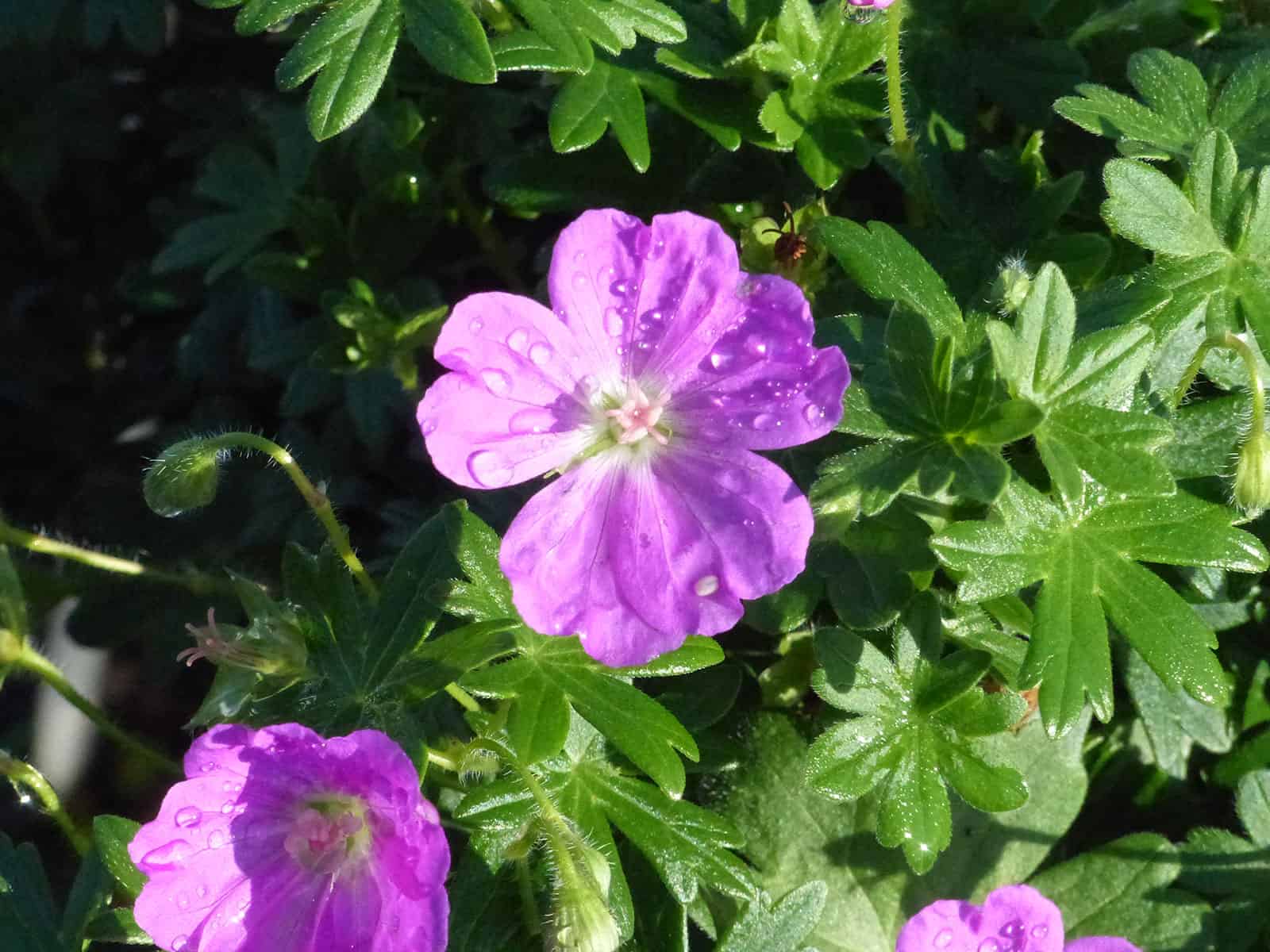
Easily grown in average, medium moisture, well-drained soil in full sun to part shade. Tolerates some drought, but produces most vigorous growth in moist, humusy soils with good drainage. Deadheading is tedious for larger plantings and probably unnecessary. Side stems may be removed at any time to control spread. If not deadheaded, some self-seeding may occur in ideal growing conditions. Foliage may be lightly sheared back and shaped to revitalize after flowering. This is a variable plant that is noted for having better tolerance for heat in hot summers and for cold in cold winters than most other species of geranium. Propagate by division, tip cuttings or seed.
Geranium sanguineum, commonly called bloody cranesbill or bloodred geranium, is an herbaceous, clump-forming perennial that typically grows in a mound to 9-12” tall with white-hairy trailing stems spreading over time to as much as 24” wide. It is native to Europe and Asia. It is perhaps the most common species of geranium grown in the U.S. today. Foliage consists of small, shallowly cut, dark green basal leaves and thinner, more deeply cut stem leaves. Solitary flowers (to 1 1/2” diameter) feature five unnotched magenta to purple crimson petals with darker veins. Flowers primarily bloom in May and June with a sparse but variable rebloom occurring throughout summer. After first fall frost, foliage usually turns attractive shades of red.
Genus name comes from the Greek word geranos meaning crane in reference to the fruit which purportedly resembles the head and beak of a crane.
Specific epithet comes from the Latin word sanguineus meaning blood red in reference to the flower color and red autumn leaves of the straight species.
‘Max Frei’ is a cultivar that is noted for its compact growth habit and reddish-purple flowers. It typically forms a spreading mound of foliage typically growing 4-9” tall and spreading 12-24” wide. It features 5-petaled, reddish-purple flowers and deeply-lobed, dark green leaves. Flowers bloom in late spring. Foliage often turns attractive shades of red in autumn.

This Coral Bells selection has scalloped leaves that emerge gold in spring, deepening to amber and peach. Sprays of light-pink flowers appear in midsummer, after other selections are finished. Very sturdy habit, an excellent choice for hot, humid summer regions. Trim off any tired old leaves in spring. Protect from hot afternoon sun. A 2006 introduction from French breeder Thierry Delabroye discovered by his wife, Sandrine. The Heuchera villosa bloodlines in this hybrid contribute a velvety leaf surface, later flowering habit and exceptional sturdiness. USPP#16560: unlicensed propagation prohibited.
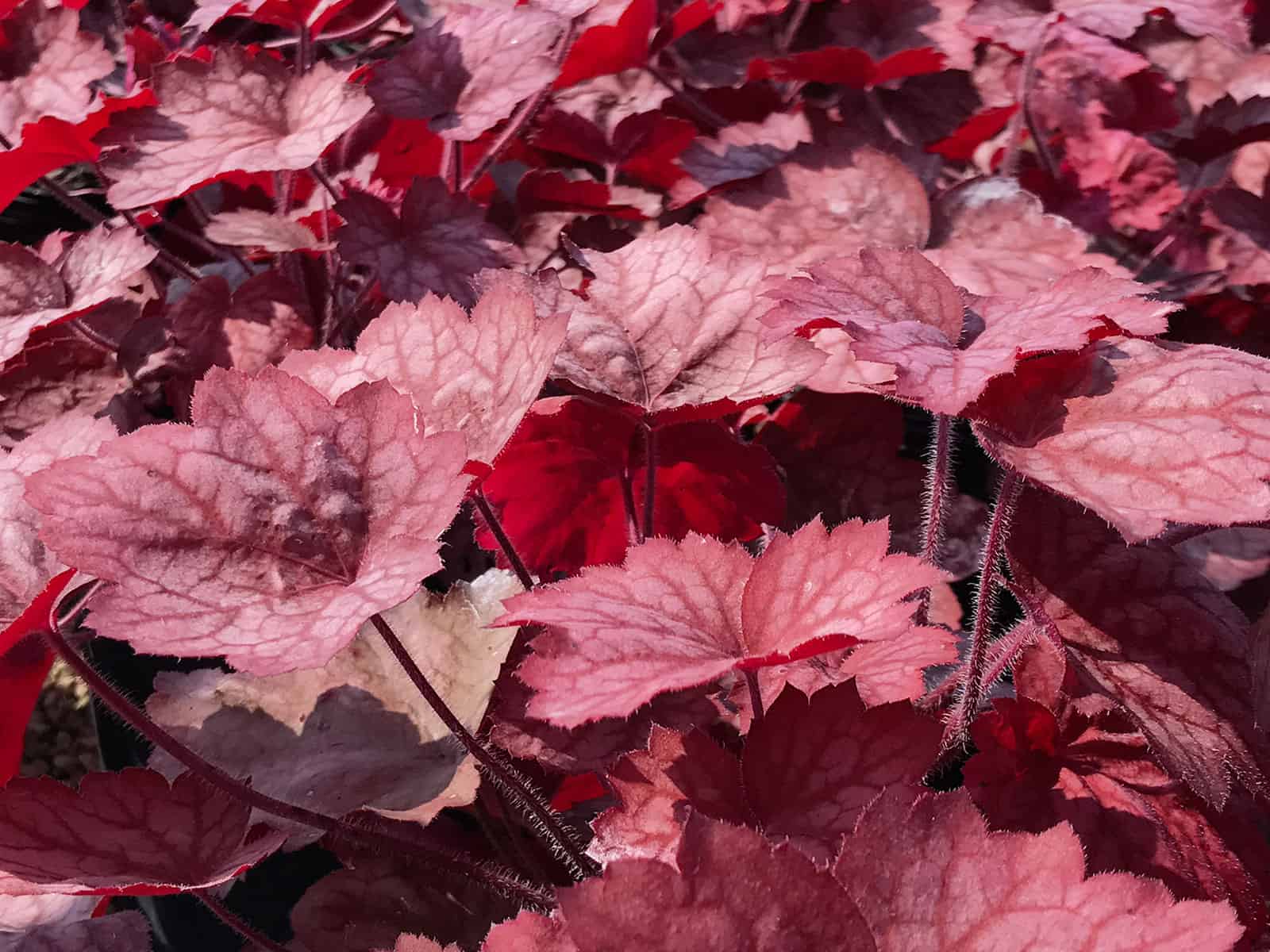
Heucheras are best grown in organically rich, humusy, medium moisture, well-drained soils in part shade. Parentage determines the best culture including optimum sun exposure. Unfortunately, the parentage of many hybrids in commerce today is unknown. Some hybrids will perform well in full sun, particularly in northern climates, but generally prefer some shade in the heat of the afternoon in southern locations. If grown in full sun, consistent moisture is very important. Scorch and general foliage decline may occur if soils are allowed to dry out. On the other hand, some hybrids perform well in shady locations, particularly if H. americana is a parent. Remove stems of faded flowers to encourage additional bloom. Foliage is essentially evergreen in warm winter climates. In cold winter climates such as St. Louis, the amount of retained foliage color in winter depends in large part upon the severity of the temperatures. A winter compost mulch applied after the ground freezes will help prevent root heaving. Divide clumps in spring every 3-4 years. Species plants may be grown from seed, but hybrids are usually divided in the garden.

Serbian bellflowers have an easy, undemanding habit. Creating a stream of lavender blue, the 1-inch-diameter star-shaped blossoms bloom reliably from late spring to early fall. The foliage remains evergreen in mild winters and needs to be sheared only once in a while to keep its appearance tidy. ‘Blue Waterfall’ flows beautifully along bed edges and through rock gardens in full sun to partial shade.
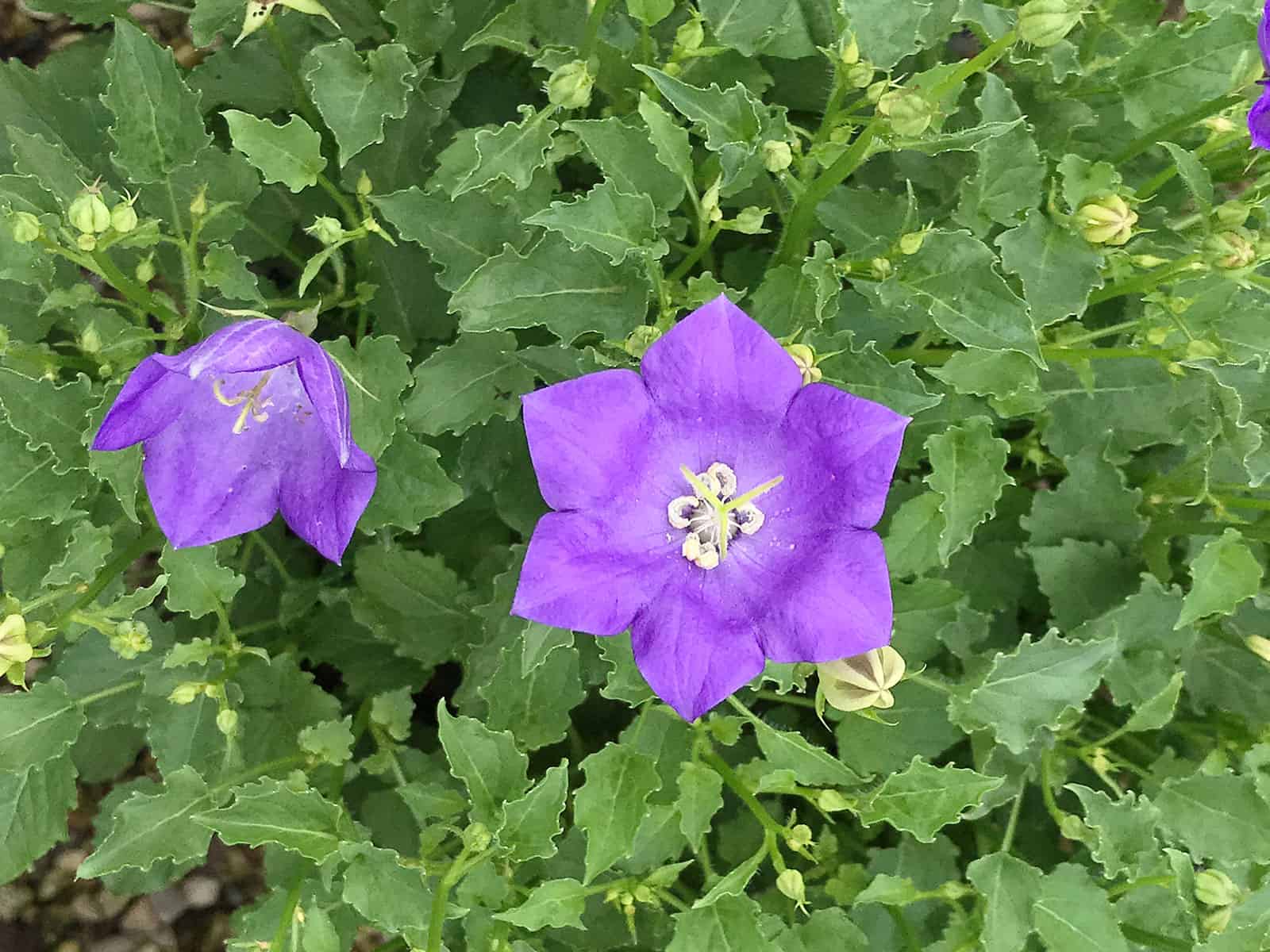
Campanula carpatica, the tussock bellflower or Carpathian harebell, is a species of flowering plant in the family Campanulaceae, native to the Carpathian Mountains of Central Europe. It is a low-growing herbaceous perennial, with long stems bearing solitary blue bell-shaped flowers. It was introduced to the Royal Botanic Garden at Kew in 1774 by Nikolaus Joseph von Jacquin. Several cultivars in shades of white, blue, pink and purple, have been developed for garden use.